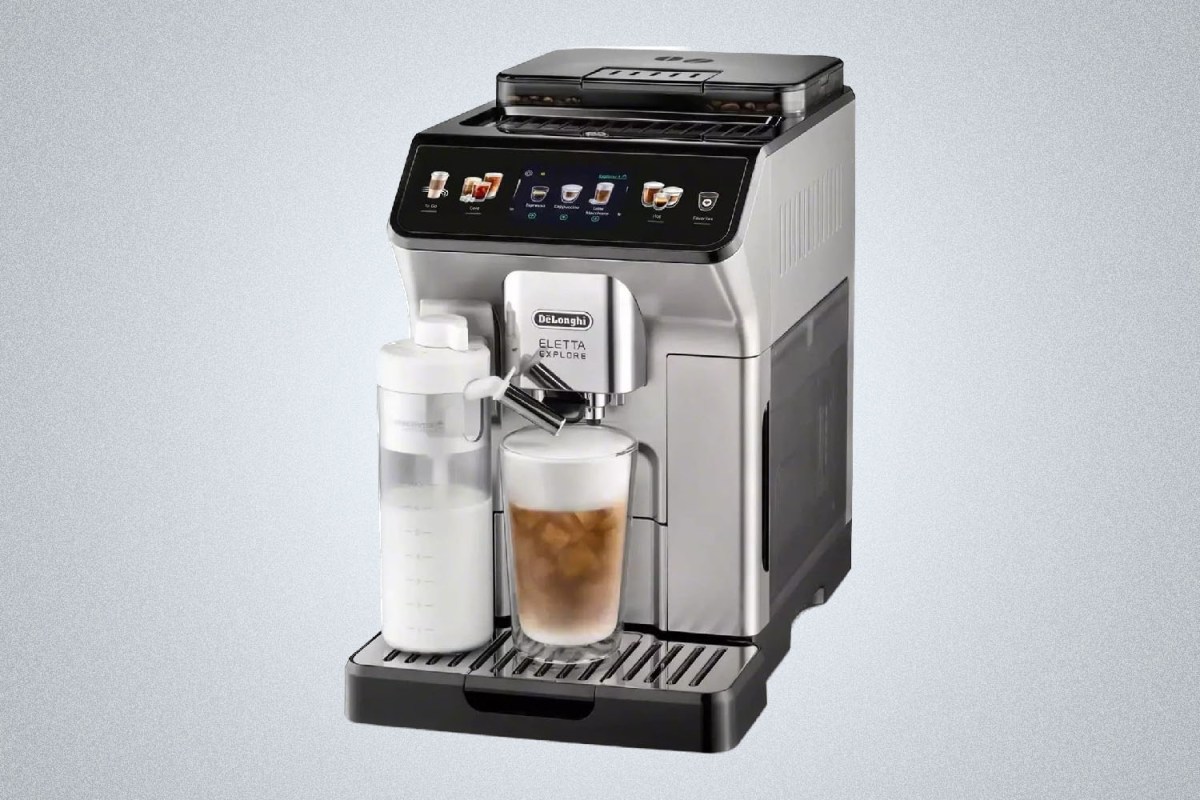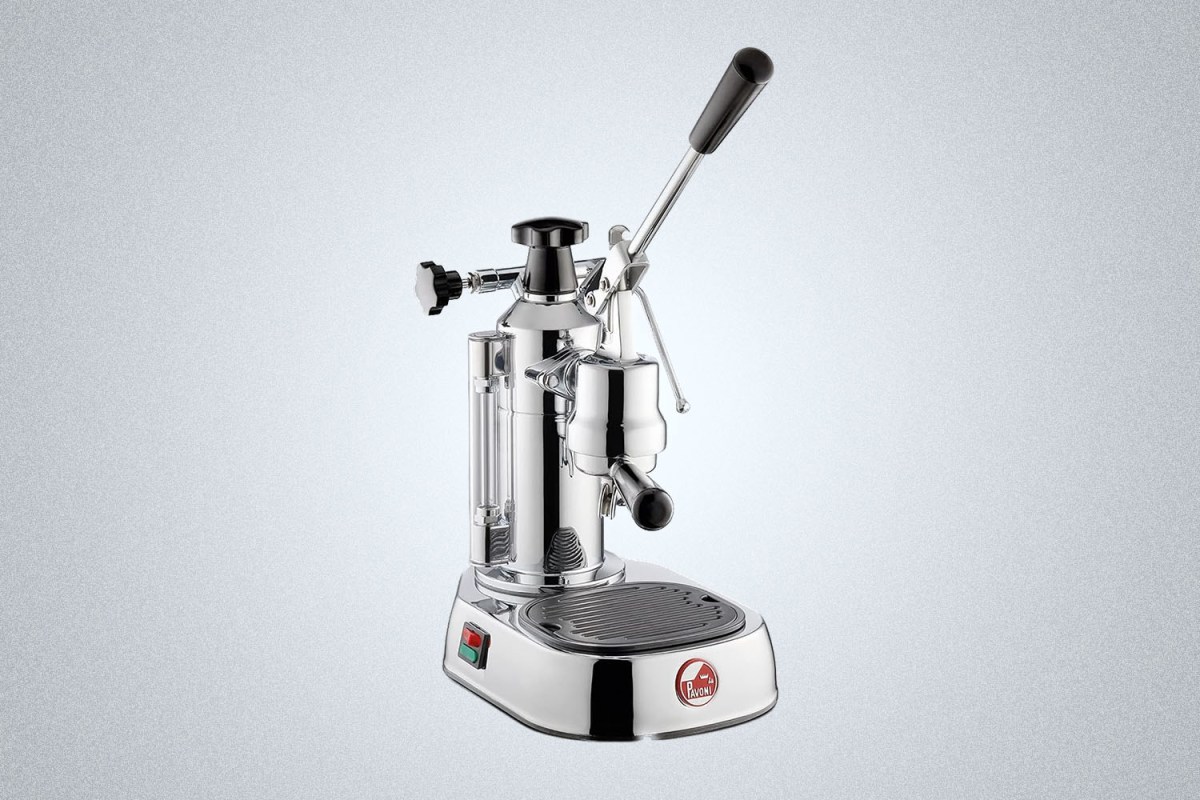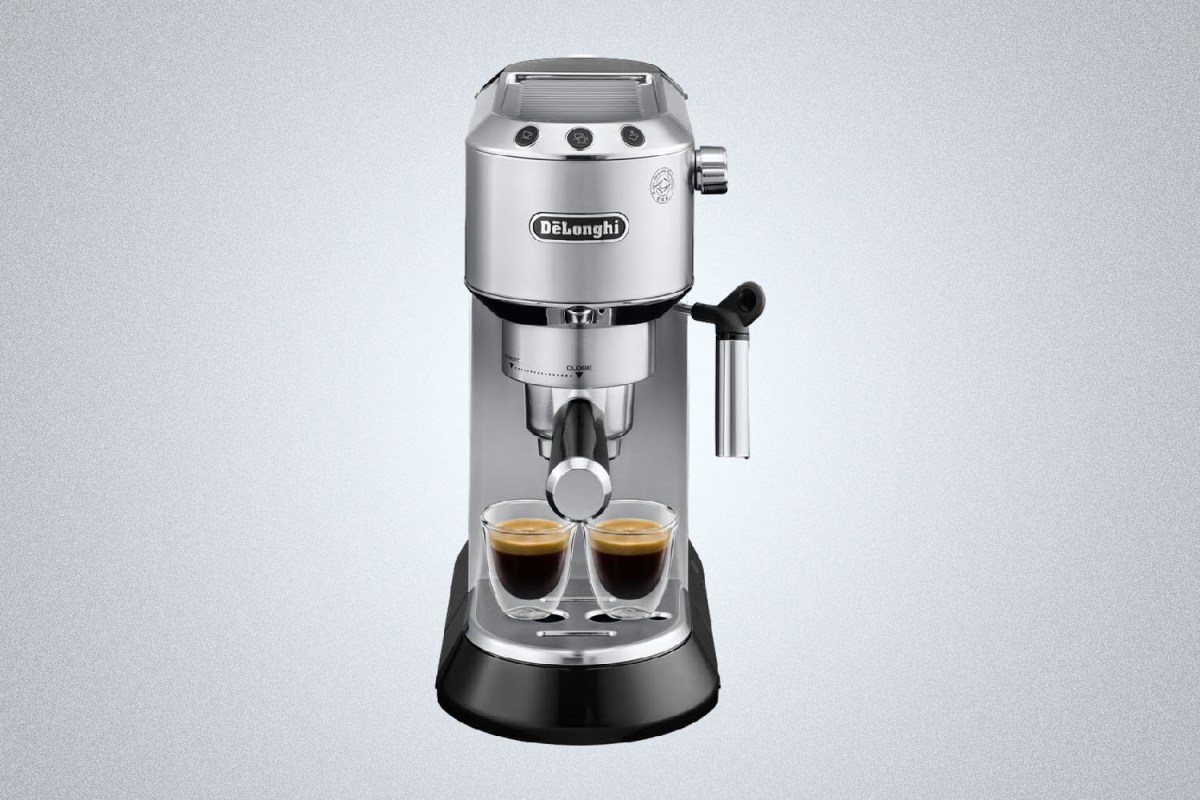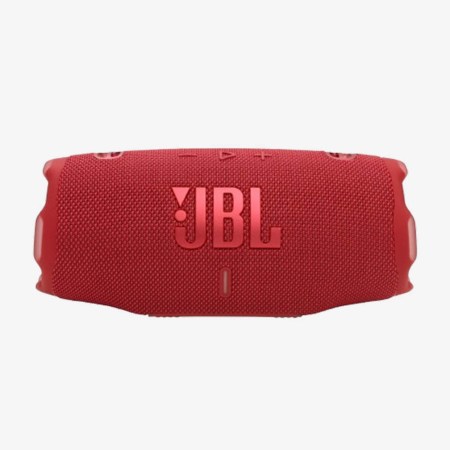Nota bene: All products in this article are independently selected and vetted by InsideHook editors. If you buy something, we may earn an affiliate commission.
If you’re a lover of rich, full-bodied espresso, but you hate spending so much money at cafes, then you’re a prime candidate for purchasing one of the best espresso machines for your home. While this may conjure up images of expensive, space-eating monstrosities, many brands have begun making models that won’t break the bank and are perfect for home kitchens.
Matthew Davis, Breville’s Coffee Product Manager, says “It is absolutely possible to bring the complex nature of espresso home, but not all espresso machines are created equal. The difficulty in finding a great home espresso machine is finding that balance of quality components to ensure you’re able to achieve all that espresso demands without investing in an actual café that happens to be in your kitchen.” Using insight from Davis to guide us and by doing some testing of our own, we compiled a list of the best espresso machines on the market for your home.
- Best with Grinder: Breville Barista Express
- Best Advanced: Breville Dual Boiler
- Best Pod Espresso Machine: Nespresso Vertuo Pop+
- Best for Smaller Spaces: Gaggia Classic
- Best Automatic: DeLonghi Eletta Explore Espresso Machine with Cold Brew
- Best Manual: La Pavoni Europicolla
- Best Budget: DeLonghi Dedica
- Best Splurge: La Marzocco Linea Mini
Things to Consider
Pressure
Davis tells us that pressure is the most important factor when it comes to making espresso, and that the pressure is actually what separates it from other brew methods. “Most espresso machines will include an electric pump to force the water through the coffee,” he says, adding that “a great espresso machine is dialed in using something called an OPV (over pressure valve) to ensure the pump can provide adequate pressure without going overboard. The sweet spot for pressure is measured in bars and the industry standard sits around 9 bars of pressure.” So be sure to be wary of machines that aren’t able to provide this.
Features
Espresso machines come with a variety of potential features, such as built in grinders and steam wands. If you’re a fan of cappuccinos, you’ll want to ensure that your machine is equipped with the latter. Davis notes that a “good steam wand (whether manual or automatic) can make or break workflow.” He also tells us that grinding is the most crucial element of making coffee. “The more grind settings the better,” Davis says. If your machine doesn’t include a solid grinder, you’ll want to invest in one to get the most from it. Additionally, he recommends a PID temperature control to be able to better regulate your brew.
Maintenance
Owning one of the best espresso machines will require a level of maintenance that some people may not be interested in. You may be required to do regular descaling and cleanings to keep it running in tip top shape, and Davis tells us that “Maintenance can be a pain with any machine, so look for a product that suits your needs.” He also notes that “Fully automatic machines can seem like the most convenient, but can also be cumbersome to maintain and clean,” so consider this if efficiency is your main goal.
8 Best Espresso Machines For Home Use
For the adventurous person looking to step into the world of at-home espresso, Breville’s Barista Express is the perfect place to start. Equipped with a 16-setting conical burr grinder that is built right into the machine, it’s a great option to avoid having to invest in a separate grinder. And for the milk-based drink fans, a built-in steam wand enables you to make lattes or cappuccinos, while a hot water spout lets you make americanos if you prefer. We like this machine because it is the perfect middle ground. It has all of the features necessary for the expert to make a great drink, like a pressure gauge, but it also features intuitive design features for the novice, like one and two-cup options and a grind dose control.
Do be aware that this option uses a thermocoil heating system and isn’t a dual boiler, so you won’t be able to brew a shot and steam milk at the same time.
Pros: Built-in grinder, includes a dosing funnel, has a steam wand
Cons: Can’t pull shot and steam milk at the same time
For the at-home barista who has made more than a handful of espressos in their day, we think Breville’s Dual Boiler is the way to go. It doesn’t feature a grinder, but the at-home pro most likely already has one that they will be excited to pair with this expert machine. As the name implies, this option features two boilers, which enables users to both pull a shot while steaming their milk. It also provides an excellent user experience. It enables the barista to adjust the internal temperature between 190-205 degrees Fahrenheit for more precision brewing. It also has a built-in clock that conveniently starts when you begin pulling the shot to time the extraction. Plus, you can choose between Fahrenheit or Celsius on the LCD screen, depending on your preference. A knob built into the bottom of the machine allows you to easily swivel it or lock it into place, and a front-load water tank really makes filling it a breeze. It’s the attention to detail that makes this such a great choice.
Do be aware that this option is pricier than other choices on our list, and as mentioned above, it doesn’t have a grinder.
Pros: Two boilers, heat adjustability, shot clock, user-friendly design
Cons: Pricier than other options
If you aren’t interested in frills or technology and just want a consistent and reliable cup of espresso, then Nespresso’s Vertuo Pop+ is the way to go. The design is sleek and also available in six color options to match ke sure that your space is complimented. A quick 30-second heat-up time means you won’t have to wait for your caffeine fix, and it can brew five sizes of coffee. You also have the choice of 40 different permanent Vertuo coffees. All you have to do is select your pod and use the one-touch button and you’ll be enjoying delicious coffee in no time. Just be aware that this option doesn’t feature a steam wand, so if you’re looking to make cappuccinos, you’ll have to get a separate frother.
Pros: Simple and intuitive, fun color options, quick heat-up time
Cons: No steam wand
For a smaller, more affordable option, we like Gaggia’s Classic espresso machine. Despite its size, it still provides 9 bars of pressure like the more expensive options out there, and it comes in a solid steel frame. A food-safe steel coating on the boiler helps prevent scaling, ensuring long-term usage, while a steam wand provides a chance to froth milk to your liking. Just note that you’ll need a separate grinder for this, but with the money that you’ll save by purchasing this more affordable machine, you can easily invest in a grinder. The simple design also features three switches, each with indicator lights to let you know when the machine is ready to be used.
Pros: Small footprint, steel parts, designed to last
Cons: No grinder
If you just want a machine that will do it all for you, we recommend DeLonghi’s Eletta Explore. Using a touchscreen display, you can choose from over 50 hot and cold drinks, including cold brew, which is made in less than three minutes. Unlike other machines that require this little effort, this machine uses real beans, not capsules. They go through a built-in conical burr grinder with 13 settings. It also comes with two milk steamers that can make both hot and cold foam, depending on your preference. Just note that this option is a bit pricier than others on our list.
Pros: Uses real beans, can make cold brew, features a conical burr grinder
Cons: Pricey
A manual lever espresso maker is as much a stylish accent to have in the home as it is a functional espresso maker. La Pavoni’s Europiccola is a perfectly welcome addition to any space for its aesthetic stainless steel design and its ability to make a great cup of coffee. Inside, an internal thermostat controls pressure, and it also features a steam wand as well. Since this model was introduced in 1968, it has garnered a lot of attention and love from coffee fanatics.
While the lever design offers added control for the user, it does require some added attention and may have a bit of a learning curve, making it less than ideal for beginners.
Pros: 1-year warranty, timeless stainless steel design, built to last
Cons: Not for beginners
At just $200, this option from DeLonghi is small in footprint but has the sleek look of a traditional espresso machine. The stainless steel machine can produce 15 bars of pressure, while thermoblock technology helps to keep the water at the same temperature. Additionally, the removable drip tray enables you to use larger cups if you need to. It also features a frother that reviewers find to work well. Just be aware that some people find it to be tedious and difficult to assemble.
Pros: Small footprint, sleek design, thermoblock technology
Cons: Tedious setup
We would be remiss to not include La Marzocco’s Linea Mini on our list, which has a stunning design and functionality. Dual boilers enable you to brew while steaming milk, a thermal stability system ensures that the temperature is stabilized every step of the way, and PID control enables the user to control temperature. It doesn’t hurt that it’s also a stunning machine. It features La Marzocco’s sleek semi-automatic paddle, and you can choose from custom color choices for almost every part of the machine, albeit for an added cost. This machine is also incredibly expensive and better suited for seasoned espresso makers.
Pros: Dual boiler, great thermal control, customizable
Cons: Not good for rookies, expensive
We've put in the work researching, reviewing and rounding up all the shirts, jackets, shoes and accessories you'll need this season, whether it's for yourself or for gifting purposes. Sign up here for weekly style inspo direct to your inbox.




























